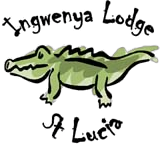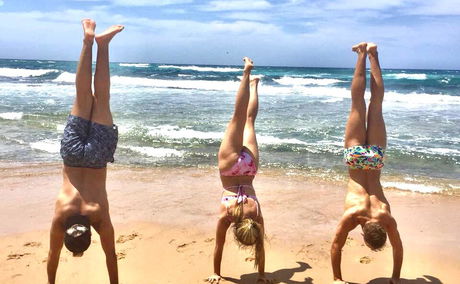There's a special kind of magic to a Cape Vidal day trip. One moment you're leaving the leafy streets of St Lucia village, and the next - just minutes later - you're cruising past zebra, buffalo, and kudu as the road winds through the wild landscapes of iSimangaliso Wetland Park. The entrance is barely 5 km from Ingwenya Lodge, which makes it one of the easiest and most rewarding day trips on...
The Majestic Giant Kingfisher: Africa's Fishing Heavyweight

The Giant Kingfisher (Megaceryle maximus) is a remarkable bird that stands out in the diverse avian world of Africa. As the largest kingfisher on the continent, it's a sight to behold and a favorite among birdwatchers and nature enthusiasts.
Physical Characteristics of the Giant Kingfisher
Size and Appearance
- The Giant Kingfisher can reach a length of up to 45 cm (18 inches).
- Comparable to a crow in size.
- Striking black and white plumage characteristic of the Giant Kingfisher.
- Shaggy crest on the head.
Sexual Dimorphism in the Giant Kingfisher
- Males of the Giant Kingfisher species have a reddish-brown chest.
- Females feature a rufous belly with a black chest band.
- Both sexes possess massive, powerful beaks typical of the Giant Kingfisher.
Giant Kingfisher Habitat and Distribution
Preferred Environments of the Giant Kingfisher
- The Giant Kingfisher inhabits rivers, streams, and lakes across sub-Saharan Africa.
- Prefers areas with overhanging vegetation or perches.
- Occasionally found in coastal areas and estuaries.
Notable Locations
- The Giant Kingfisher is notably present in iSimangaliso Wetland Park and similar protected areas.
Feeding Habits
Diet of the Giant Kingfisher
- The diet of the Giant Kingfisher primarily includes fish (up to 20 cm long).
- They also consume crabs, frogs, and small reptiles.
Hunting Technique
- The Giant Kingfisher employs precision diving from perches.
- Often fully submerges to catch prey.
- Returns to perch to stun prey before swallowing.
Behavior and Social Structure
General Behavior
- The Giant Kingfisher is typically solitary or found in pairs.
- Territorial, especially around fishing spots.
- Distinctive loud, cackling call ("kek-kek-kek") is a hallmark of the Giant Kingfisher.
Breeding and Nesting of the Giant Kingfisher
- Giant Kingfishers are monogamous and mate for life.
- Nest in riverbanks.
- Tunnel nests up to 2 meters deep.
- Lay 2-5 eggs per clutch.
- Both parents share incubation and chick-rearing duties.
Conservation Status and Threats
Current Status
- The Giant Kingfisher is listed as Least Concern by IUCN.
- Populations are relatively stable.
Potential Threats
- Habitat loss and degradation pose risks to the Giant Kingfisher.
- Pollution of waterways affecting prey availability.
The Giant Kingfisher in iSimangaliso Wetland Park
Significance
- The Giant Kingfisher is part of the park's rich bird diversity (over 520 species).
- Benefits from protected habitats and abundant fish populations.
Other Kingfisher Species in the Area
- Pied Kingfisher
- Malachite Kingfisher
- Brown-hooded Kingfisher
Birdwatching Tips at St Lucia
Best Times to Spot Giant Kingfishers
- Early morning.
- Late afternoon.
What to Look For
- Large size compared to other kingfishers.
- Distinctive black and white plumage of the Giant Kingfisher.
- Listen for the characteristic cackling call.
Conclusion
The Giant Kingfisher is a fascinating species that plays a crucial role in its ecosystem. Its impressive size, striking appearance, and remarkable fishing abilities make it a standout in African birdlife. Whether you're an avid birder or simply appreciate nature, keeping an eye out for these magnificent birds can add an extra layer of excitement to any visit to Africa's waterways and wetlands, especially in protected areas like iSimangaliso Wetland Park.
Further Reading
St Lucia is the kind of place that invites you to slow down – but it's also the perfect springboard for those who want to see more. When you base yourself at Ingwenya Lodge, you're not just booking a unit – you're settling into a quieter rhythm, with the estuary on your doorstep and adventure in every direction.
So, you’ve booked your stay in St Lucia. Maybe you’re dreaming of hippos at sunset, early morning walks through iSimangaliso, or simply unplugging somewhere warm and wild. But now you’re staring at an empty suitcase and wondering, what on earth do I pack for this place?







Share This Post